
If you're wondering which method of fishing will catch you the most fish, you've come to the right place. Drifthook has explored whether fly fishing is more effective than other types, which options are available, and when it might be best to try something else.
The most effective method of fishing depends on several factors. Fly fishing allows you to customize every aspect of your cast and also provides for inconspicuous casting. It's an excellent choice for river and still water fishing. However, other types of fishing can sometimes be a better choice, depending on your goals.
Knowing when fly fishing is more effective than your spin fishing and other options can get complicated. You should explore the different fishing methods available and the factors that influence which is the best choice. Keep reading to learn more about when fly fishing is appropriate and will get you the best results.

Fly Fishing: When It's Most Effective
Fly fishing can be the most effective method of fishing, especially if you're fishing on rivers, instead of lakes. Compared to spin fishing, it offers an all-around more lightweight experience, with a light rod and light fly that's designed to imitate the fish's food.
Understanding the advantages of fly fishing will give you the knowledge to know when it's the best method to use. Fly fishing is generally best for fishing on rivers and still waters, whether you put on your waders and climb into the water or fish from the riverbank. One of its main advantages is that it allows you to customize your fishing experience so you can choose different elements of your equipment to suit what you're aiming to do and the fish you want to catch.
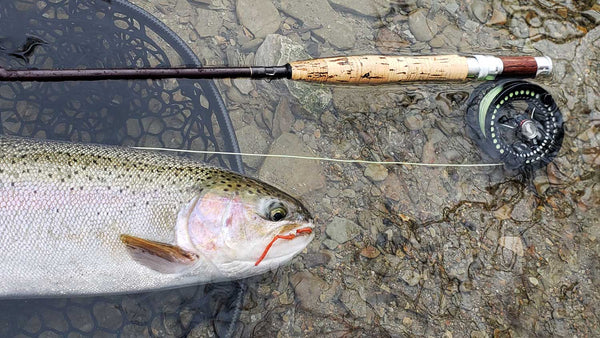
The difference between fly fishing and conventional spin fishing is that they use different rods and lines. Spin fishing requires a heavier rod and uses a single monofilament line, while fly fishing rods are generally more lightweight and flexible. Fly fishing uses a fly line, leader and tippet to cast a lightweight fly, which you can choose based on the type of fish that you want to catch. The fly you use should be selected based on the species of fish you want to catch so that it imitates the food of that fish.
Fly fishing is suitable for both still and moving water, but it's more commonly used for river fishing. It is a more complicated form of fishing, which takes a little longer to learn than regular fishing. However, it's worth taking the time as soon as you catch on you will be forever hooked on this amazing sport.

Fly Fishing is the Better Choice if You:
- Are mostly fishing on rivers and still waters such as lakes & ponds
- Hope to catch fish such as trout, bass, salmon, pike, and other species
- Want to be able to personalize your rod, line, leader, tippet, and flies based on your preference and the type of fish you want to catch
- Want the advantage of inconspicuously delivering the fly, which acts as fish food might
Mastering Fly Fishing for the Best Results
The advantage of fly fishing is that it's an entirely customizable experience. You can choose everything from your rod to your fly so that it delivers precisely the right cast and attracts the type of fish you want to catch.
Firstly, there's the ability to choose different types of rod. There are general fly fishing rods that will give you an all-around experience, and there are rods that will provide you with specific advantages. When choosing a fly fishing rod, you can decide on the type of fish you want to catch and select the weight of your rod, line, and reel based on your decision. Other elements need to be considered too, such as the rod action, the type of handle, and even how many parts the rod can be broken into.
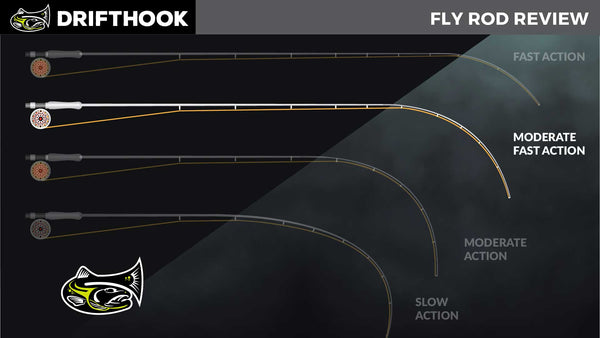
The line can be personalized by choosing the weight, length, and style. Along with the line, the tippet and leader can also be adjusted to meet your needs. A longer or shorter leader can easily be chosen, and different styles of tippets are also available.
Selecting these correctly will help to make the line less visible to the fish, enabling you to get closer to fish without scaring them off any increasing your chances of success. Your choice of tippet also affects how easy it is to attach and detach flies.
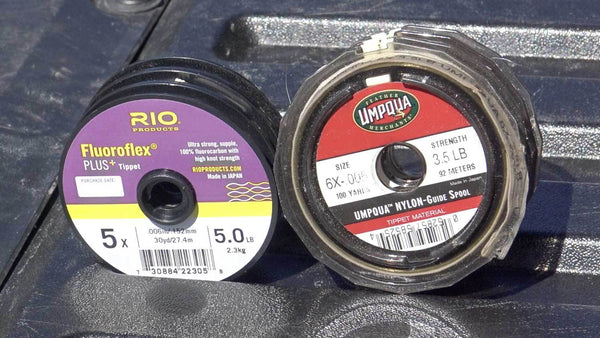
Being able to customize the fly is another advantage presented by fly fishing that can make it a more productive fishing style. With the massive range of flies available, you can select a different one to meet your needs whenever you fish.
Flies are designed to imitate the food that the fish would naturally eat, so there are various flies to match different fish. Fly fishing might be most famous for trout fishing, but it's ideal for other types of fish too.

There are three main types of fly: dry flies, nymph flies, and streamer flies. Each has its advantages, and there are different styles within these categories too. One of the most significant benefits of these flies and the method of fly fishing is that the fly is delivered quietly and subtly, avoiding scaring off any fish and making for an effective way of fishing.

Fly fishing is the preferred method of catching trout for many people. However, when practices such as bait fishing and spin fishing can also be effective at catching trout, you might wonder why fly fishing is necessary. The truth is that while you can catch trout with those other methods, they can be a little clumsier than fly fishing.
The gentle methods used in fly fishing mean you can carefully catch the attention of the fish without scaring it away. A trout is likely to think a fly is a real insect that it wants to eat, rather than a sudden intrusion it intends to defend its territory from. On top of that, fly fishing can simply be a lot more satisfying.

Of course, one thing to keep in mind when considering the effectiveness of fly fishing is what being effective means to you. For some people, an effective method of fishing is one that catches the most fish. However, for others, productive fishing means meeting your goal, which might mean catching one fish of a specific type.
It's here where fly fishing can reign supreme. Its customizable nature means you can target the fish of your choice, and enjoy the experience of fishing, rather than it being all about how many fish you catch.

The cost might be another way you want to look at the effectiveness of fly fishing - both in terms of money and time. Can you get more bang for your buck with fly fishing or with other methods of fishing? And will it take you a long time before you're able to get the results that you want?
When you compare to spin fishing, spin fishing is likely to be a smaller investment when you're first starting. The equipment is less expensive, and you can pick up the right skills faster too. However, long-term, fly fishing can work out as a better investment. Once you know what you're doing and you have the equipment that you need, you can save money. This is particularly true when it comes to lures, as flies can be cheaper and even made at home.
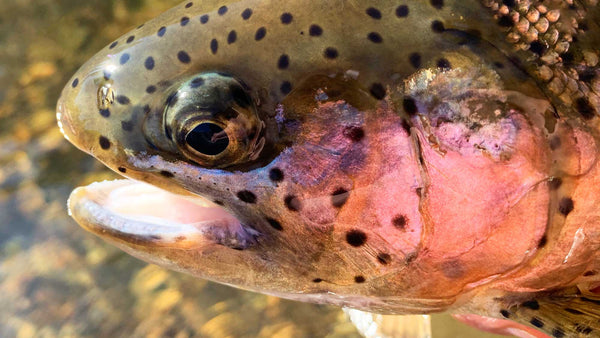
Of course, fly fishing may not always be the appropriate choice. While many people prefer it for trout fishing and other river fish, it's not always the best option for lake fishing. If you aim to catch a more significant number of fish, there are times when spin fishing or bait fishing might be the better method to achieve your goals. Spin fishing can be easier to do in a tighter space, with much less risk of getting your line caught in a tree or any other hazards.
The critical difference between fly fishing and other methods of fishing may be consistency. Since fly fishing aims to imitate the natural behavior of the fish's food source, there's a lower chance of spooking the fish. Anyone fly fishing could get much more consistent results due to presenting a more tempting lure for the fish, as well as allowing for excellent levels of customization.

The Best Fish for Fly Fishing
Fly fishing is an effective method of fishing for a broad range of different species.
Some of the top fish for freshwater fly fishing include:
- Trout
- Pike
- Bass
- Carp
- Salmon
- Grayling
- Sunfish
Don't think that fly fishing is purely for freshwater fish in rivers and streams, however. Marine fish can also be caught using fly fishing, especially with tech advancements that have resulted in stronger fly fishing rods.
If you're considering some fly fishing to try and get some saltwater fish, you might consider fishing for:
- Tarpon
- Redfish
- Striped bass
- Bonefish
- Snook
- Marlin
- Tuna
- Wahoo
- Barracuda
- Sailfish

Choosing a Fly Fishing Rod and Line
Customization, when you're fly fishing, will bring you all of the benefits of the style. The right rod and line will help you to get started, and you should be thinking about which fish you want to catch while you're making your decision. Choosing the right rod will increase the effectiveness of your fly fishing.
The weight of the rod matters to help you target the fish you want. For small fish such as a panfish or small trout, a 0 to 4 weight rod will be fine. Medium-sized fish might need a slightly larger 4 to 6 weight rod. Of course, the largest and most powerful fish will require the heaviest rods. Something as significant as a marlin or sailfish will need a 14 weight rod to give you the power and strength that you need.
The length of your rod also matters if you want to fly fish effectively. The length can affect how accurately you're able to cast, especially when you're limited on space. A longer rod works for larger bodies of water, allowing you to have a more extended reach, while a shorter rod gives you the accuracy that you need when fishing in rivers and streams. A rod of around 6 to 8 feet is suitable for river fly fishing, while a rod measuring about 8 to 10 feet gives you more distance for fishing in open waters.
When it comes to lines, there's no need to be confused about your choice. As with other fly fishing essentials, you can choose based on what you're going to be fishing. Other factors that can be important to take into account include where you're going to be fishing and the size of the flies you'll be using. Fly fishing line weight is ranked from 1 to 15, with 1 being the lightest weight. The lighter the fly you are using, the lighter weight you will generally want for your line.
It might sometimes seem complicated to pick a line weight, but it's relatively easy. It should be matched to your rod and reel, and the rod will often tell you what weight line you should be selecting. When it comes to the importance of the fish, choose between 1 to 7 for lighter fish, 7 to 9 for something like bass, and 8 to 15 for large fish.
Most fly lines are tapered, which helps with more efficient casting. The taper varies over the length of the line by weight, thickness, and diameter. There are five main types of taper, which meet different needs:
Weight-forward (WF) taper
- The best choice for beginners
- Tapered in the front end and heavier for the first 30 feet
- Helps with long casts and improves precision
Bass bug/saltwater (BBT) taper
- Similar to WF taper with shorter front line
- Good for use with heavier flies
Double taper (DT) Preferred by experienced fly fishers
- A good choice for being precise on small to medium rivers
- Thicker in the center - economical as they can be turned around when one end runs out
- Not as much wind resistance or casting distance compared to WF taper
Shooting taper (ST)
- Casts further than other lines
- Designed for fast-moving water and high winds
- Stout and short line section that forms a casting loop
Level (L) taper Uniform in diameter, making them economical
- Most challenging to cast, making them unsuitable for beginners
- Used by experienced anglers for fly fishing with live bait

Leaders and Tippets
The leader and tippet help to ensure that your fly is delivered more naturally and that there won't be a big splash that scares off the fish. It's a good idea to have several different sizes of leaders when you're on or in the water so that you can change them around as the conditions change and you change your fly.
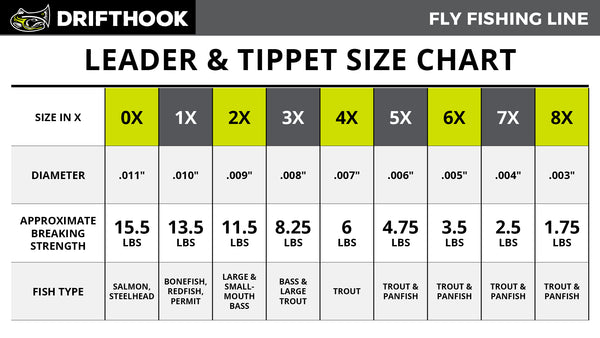
The tippet is the end section of the leader, which you will tie to your fly. When you buy leaders, you will notice that they come with a system that helps you match the size of the tippet to the size of the fly. Tippets are rated from 0X to 8X, with 0X being the thickest and strongest and 8X being the thinnest and weakest. For example, 4X, 5X & 6x tippets are used most often with trout, with recommended fly sizes of between 12 through 22.
Flies: What You Should Be Using
Being able to choose the best fly for the job is what can make fly fishing so effective. The fly that you decide when you're fishing is intended to mimic the food source of the fish that you want to catch. That means that if you wish to fly fishing to be as effective as possible, you need to have the right fly to match the fish. It can help to know a little bit of entomology (the study of bugs) and which fish eat which insects, but you don't need to be an expert to find the best fly for different purposes.

Knowing a little bit about different insects can give you a foolproof way to choose the right fly. If you can recognize the insects that are currently on the water, you can select a fly that imitates it. Being able to do this is extremely helpful because what the fish may be eating can change depending on the time of year, as well as other factors.

The two main types of flies are dry flies, which sit on the surface, and nymph flies, which go under the water. Even just choosing between these two types of fly can make a difference to whether you get any interest from the fish. If nothing is happening with the flies that mimic adult insects, nymph flies may be what you need to get a bite.

Here are some factors to consider when you're selecting the best fly to match what the fish are eating:
|
Size |
Pick a fly that's about the right size as the natural food, whether it's an insect, minnow or something else |
|
Movement |
Consider how the fly will move on or in the water to mimic that natural food source |
|
Shape |
Study the outline of the natural fish food to find a fly that matches |
|
Color |
Think about whether the colors are bright or dull and try to match them as much as possible |
For some of these factors, it can be useful to have a little entomology knowledge. However, if you have a keen eye, merely observing what is on or in the water can also help you to choose the best fly.
Some flies are designed to move in an attractive way, rather than imitating a particular food source. They could look like several things when moving through the water, depending on the size and color. They are designed to look like something good to eat, without necessarily being something specific.

Essentially, there are a few steps you should take when choosing a fly to make your fly fishing more productive.
- Take a look at the water to see if there are any fish feeding and what they're eating
- Select an imitation fly that matches what the fish are eating
- If there's no feeding activity, choose an attraction fly instead
- Choose a fly that you feel confident using
At Drifthook we pride ourselves on the system that we developed to help even the most novice fly fisher catch more trout. Check it out here
The Skills You Need for Fly Fishing
For the most effective fly fishing, you need a specific set of skills and a deal of patience too. Spin fishing can be more comfortable to pick up, but if you want to enjoy the benefits of fly fishing, you need to learn a few different things. They might both be types of fishing, but fly fishing is very different.
In addition to the different equipment, you need to know how to use it all effectively. Firstly, you need to learn how to choose and put together all of your gear. You also need to grasp a completely different type of casting from spin fishing. While it takes a bit of practice, beginners can pick up the essentials in only one afternoon. You use the fly line to propel your fly forward and get it in the right place. The weight of the line ensures that the fly can be delivered with almost no weight for less intrusion.

While you can learn to fly fish from watching instructional videos online or even getting a friend to teach you, some professional instruction can help you. You can attend seminars or take lessons to learn from someone in person, which can be helpful if you have questions or want a practical demonstration. You can even practice casting in your backyard if you have space, so you can get a feel for what you need to do.
Once you've got all the gear and you've worked out how to cast, you need to know how to catch a fish. Although there are many different options for your fly and other elements of your setup, you can start with something simple while you're learning. A small bunny leach makes an excellent choice for your first fly, as they can be used to catch most things. When you're out on the stream or river, you can practice casting around various obstacles and pull (strip) the fly back at different speeds to get a feel for what works.

In small streams, cast upstream and let the fly drift until it's on the other side. Strip your fly back in and try it again twice more before moving to a new spot. This will help you to practice presenting the fly to a fish without scaring it away. Once you have the hang of this, you can start trying out different flies.
If you ever need advice, fly shops are often the best place to go, whether online or offline. You can find plenty of helpful materials online and buy all of the gear that you need too. Drifthook has a range of resources to help you learn all that you need to know to get started with fly fishing and to develop your skills.
Where to Fly Fish
Of course, knowing where to go if you want to go fly fishing is essential too. Fly fishing can be suitable for different types of water, but many people feel that spin fishing is the best option for saltwater. If you're just getting started, a farm pond can be a great place to get some practice and become more comfortable with everything.
If you're ready to get out into the world and start fly fishing for real, there are plenty of recommendations you can find online and from other fly fishing enthusiasts. Each fishing spot will have a different level of difficulty, so pay attention to whether it is suitable for your skill level. You might also be looking for a particular type of fish, so make sure to check that wherever you're going will have what you're looking for.
If your looking for our recommendation for the top 25 places to fly fish in the US check out our full article here.

Effective Fly Fishing
In the end, many different elements go into effective fly fishing. Firstly, knowing when it's the best choice over other methods of fishing will get you on the right path. You can use fly fishing anywhere, but there may be times when spin fishing is the more appropriate choice.
If your goal is to catch specific types of fish, fly fishing is going to be your best option. Its customizable nature means that you can choose everything to create the right conditions and get the fish that you want. Plus, specifically targeting a certain type of fish doesn't have to mean limiting your numbers. If you're willing to take the time to learn how to fly fish, it can deliver a range of excellent advantages. You'll open up a whole new world once you start fly fishing and enjoying how effective it can be.
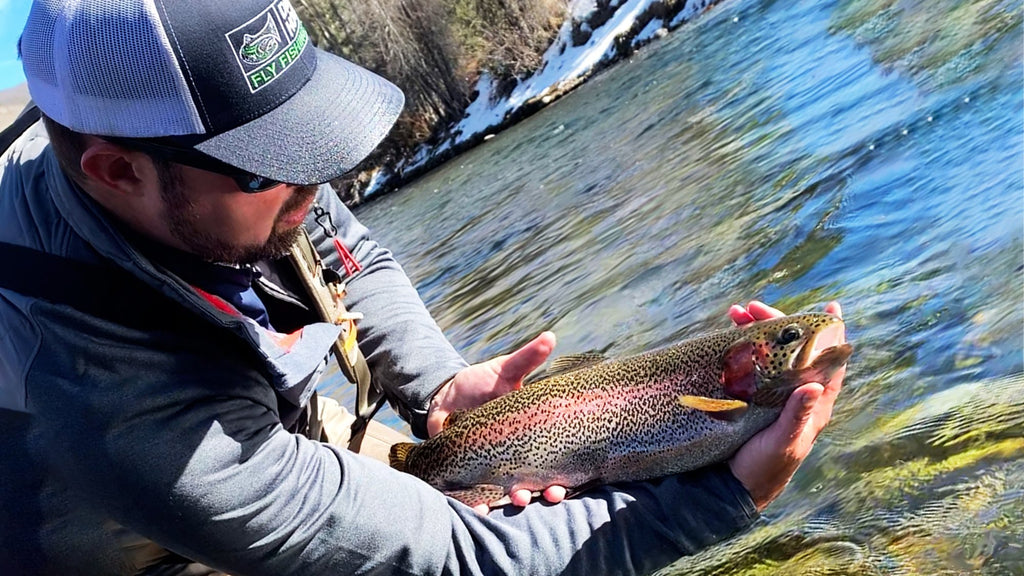
About the Author
Matthew Bernhardt, a third-generation Coloradan, grew up at the forefront of the state’s fly-fishing revolution, enjoying time on the water side by side with experienced guides and lifelong anglers.
By combining his passion for fly-fishing with input from other experienced fly-fishers and guides and his fine arts degree from Colorado State University, Matthew spent five years carefully developing the Drifthook Fly Fishing System, built to help every angler catch more trout.
When he’s not spending time with his wonderful family, you’ll find him out on the water catching MONSTER trout, and he anxiously looks forward to the day when his kids are old enough to join him there.



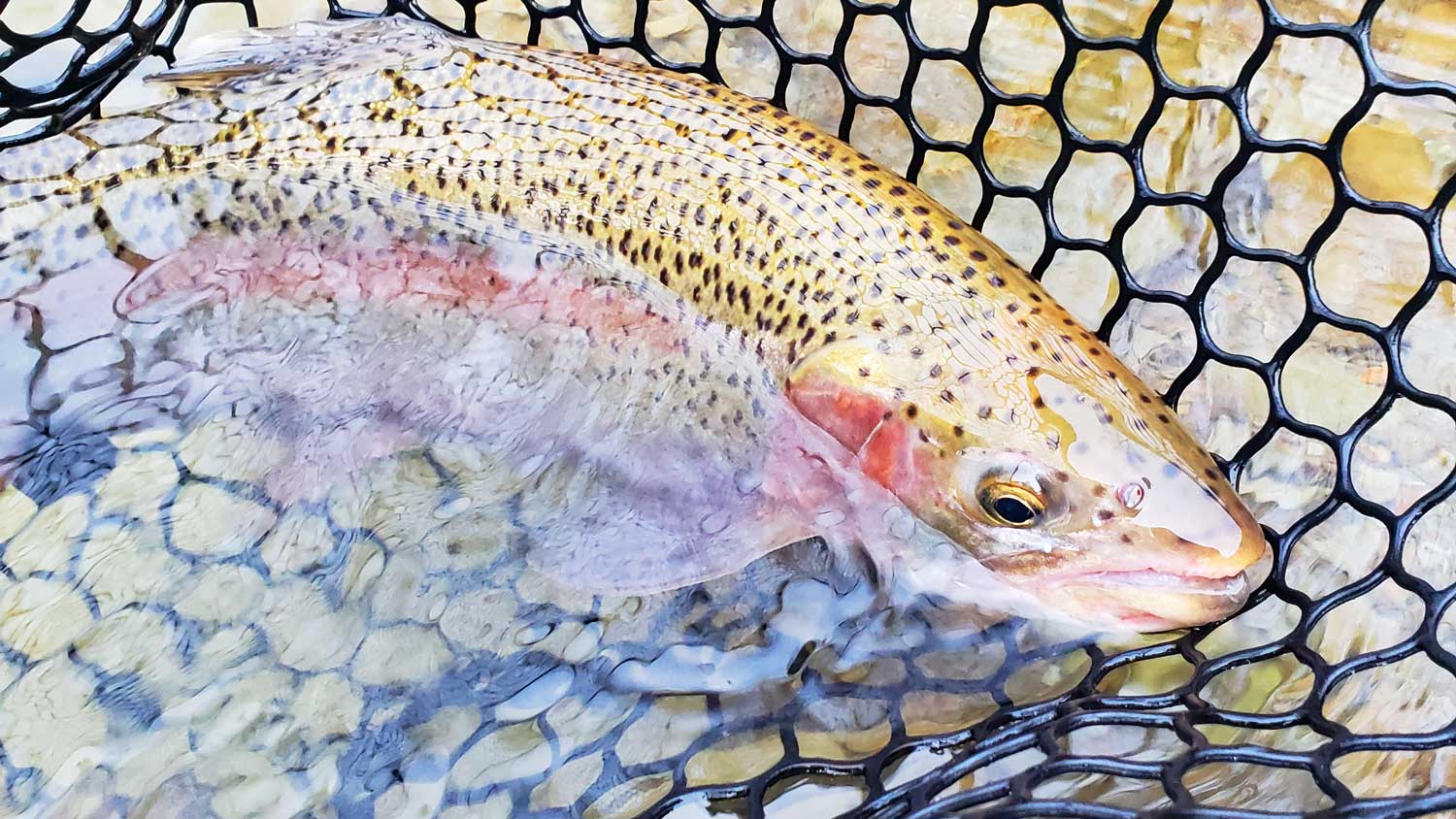
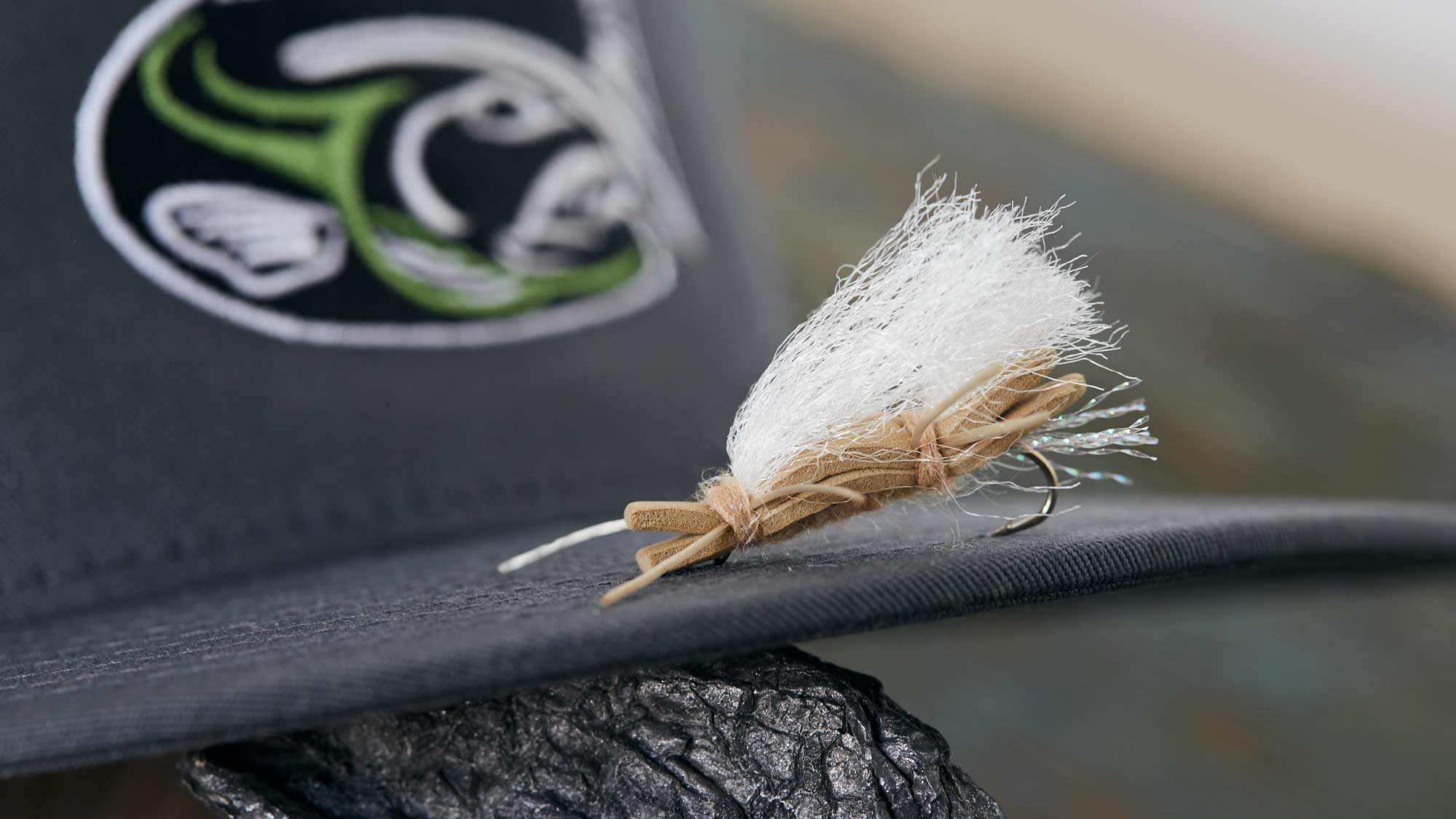
3 comments
Greg
The most effective fly fishing is done with the larva stage of a fly, like a butter worm, hellgrammite or wax worm. Red worms work even better, but those don’t turn into anything that flies. A round split shot and a #10 bait holder hook is all the tackle you need. A light to medium action 6.5’ spinning rod with a decent reel with at least six bearings completed your gear. I guarantee I can catch more fish with this than ANY fly fishing set up.
The most effective fly fishing is done with the larva stage of a fly, like a butter worm, hellgrammite or wax worm. Red worms work even better, but those don’t turn into anything that flies. A round split shot and a #10 bait holder hook is all the tackle you need. A light to medium action 6.5’ spinning rod with a decent reel with at least six bearings completed your gear. I guarantee I can catch more fish with this than ANY fly fishing set up.
Paul
The question I have is how is fly fishing more productive then using a spinning rod besides using a dry fly? I like both but find I can do everything a fly fisherman can with my spinning rod, I can cast a small size airlock bobber with two tungsten nymphs size 18 fifty feet accurately and keep my line off the water from the indicator to the tip of my rod making more precise hook sets and not needing to mend, there for not scaring the fish.
The question I have is how is fly fishing more productive then using a spinning rod besides using a dry fly? I like both but find I can do everything a fly fisherman can with my spinning rod, I can cast a small size airlock bobber with two tungsten nymphs size 18 fifty feet accurately and keep my line off the water from the indicator to the tip of my rod making more precise hook sets and not needing to mend, there for not scaring the fish.
William Chan
Excellent introduction for beginners! Thanks.
Excellent introduction for beginners! Thanks.